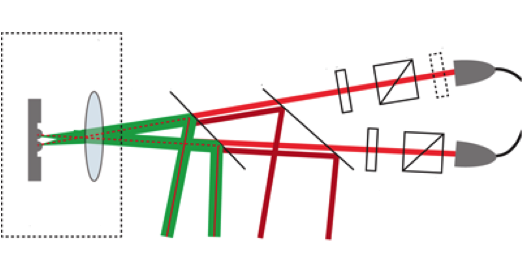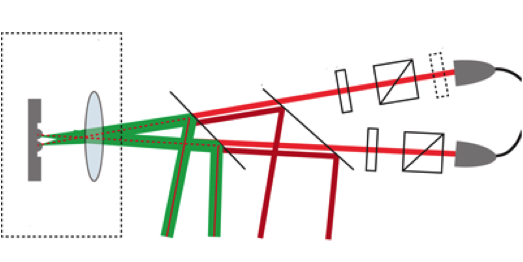One Photon Good, Two Better
Although several powerful quantum algorithms have been put forth for quantum computing, implementing them in a physical device requires suitable qubits, protection from decoherence, and ways to read inputs and write outputs. Nitrogen-vacancy centers (NV) in diamond, which are nitrogen atoms coupled to a lattice vacancy, have pushed to the front of the queue of candidate qubits owing to their easily controllable spin states and stable optical properties. The trick now is to find a way to entangle and manipulate pairs of distant qubits for quantum computations. Hannes Bernien of Delft University of Technology, Netherlands, and colleagues now report in Physical Review Letters their progress on this front in the form of two-photon quantum interference of spatially separated diamond NV centers.
Such NV centers have been experimentally well characterized and researchers have entangled NV spins with photons, but the new work by Bernien et al. takes the next step. If two indistinguishable photons, each entangled with a distant NV center, can exhibit quantum interference then this can be exploited to obtain entanglement of the NV centers themselves. The authors have demonstrated exactly this kind of two-photon quantum interference by carefully isolating the optical transitions of separate NV centers and tuning them into resonance with applied electric fields. Moreover, the authors carried out simulations of the experiment with no free parameters that agree well with the interference data. Their work now sets the stage for controllable entanglement of pairs of NV centers in a bulk material and the possibility of building quantum networks of qubits for information processing. – David Voss





